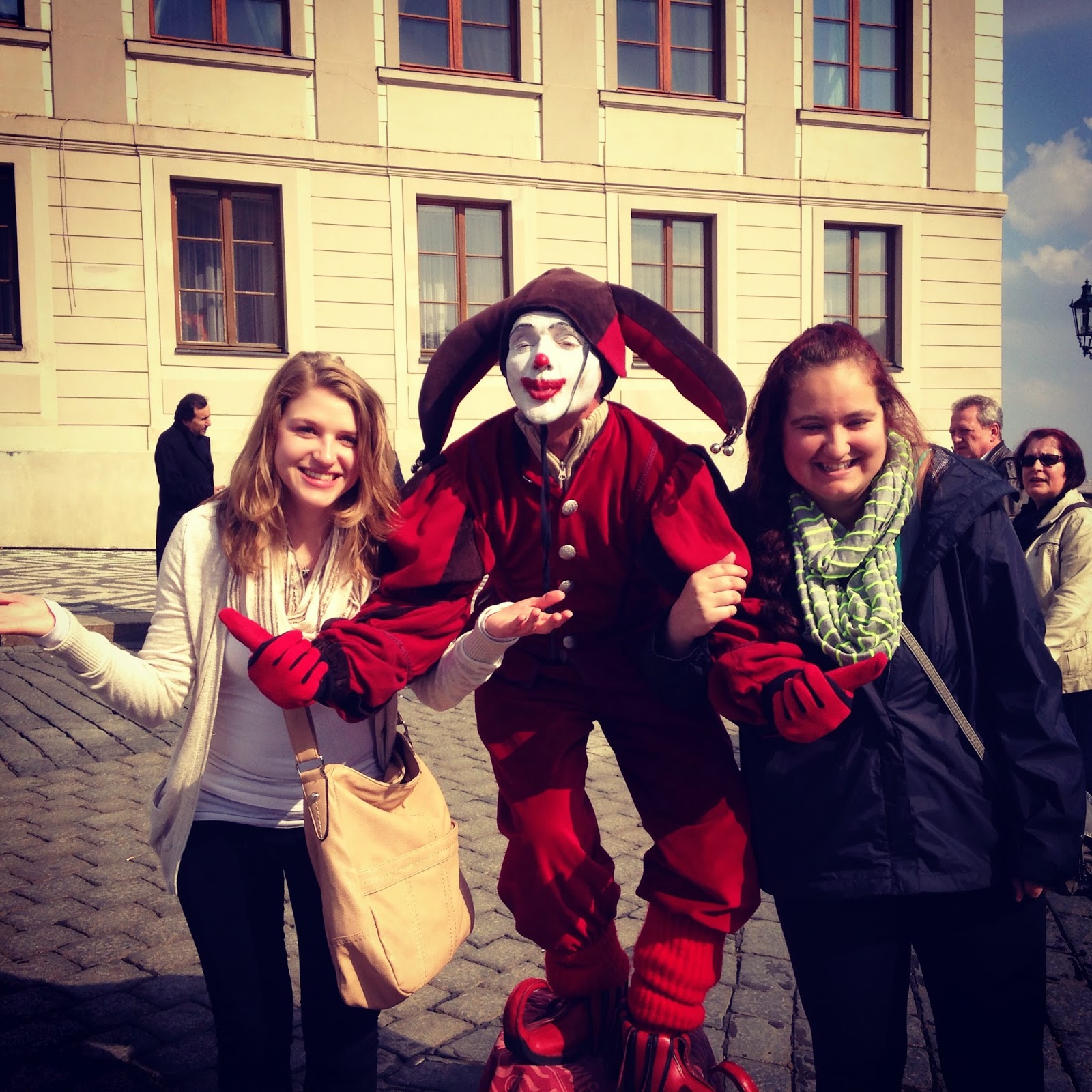Prague and Dresden
The performers are always interesting to see. These ones are in Prague, Old Town Square.
Some of the iconic statues on Charles Bridge. An interesting thing that our instructors pointed out to us is that people would constantly touch the wrong part of the Charles statue for luck because they did not know the legend. For luck you are supposed to touch the man being thrown off of the bridge (St. Charles), but instead many people touch the onlookers and the dog. After they mentioned this, I couldn't pass by without noticing at least one person doing it the wrong way.
This is Lennon Wall in Prague, not far from Charles Bridge. It originally just had John Lennon's face on it, but over the years, it has been added to and still can be. Now the name Hrabal, a famous Czech author, can be seen repeatedly on the wall.
Part of Lennon Wall that I really liked.
During our second stay in Prague, this banner could be seen when we walked from Charles Bridge to Old Town Square. Ukrainians are one of the largest immigration groups in the Czech Republic, so the recent developments there are not taken well by many here.
This is the symbol of Prague and is on every drain in the city.
In Prague I had the chance to try another traditional Czech dish: crispy duck with cabbage and dumplings.
One side of the Cathedral at the Prague Castle.
Some of the guards at the Prague Castle.
In the cathedral at the Prague Castle the tombstones, which used to be placed on the ground over the bodies of nobles, are now propped up so that they do not break from people walking on them. The purpose of the stones being on the ground was to show humility in death as people would walk over them, symbolizing that we all have the same fate.
A couple of shots from inside the cathedral.
This is a diagram/map of what the cathedral used to be (upper left-hand corner) and then what is was changed into.
This is a building within the castle walls. It doesn't have much historical significance, but our professors told us that the Czech flag is often not seen unless it is on an official building.
In this hall they used to hold all kinds of events from dinners to jousting. It is still used today for important meetings and events.
Many of the ledgers were destroyed in a fire, but the remaining ones are kept within the castle. These ledgers kept the information on which families owned what land, so when they needed to prove their property, the family would need to remember the color of book and symbol on it. For example, the blue book with the lily. As you would expect, the fire spawned a lot of forgeries.
This is sometimes called "Golden Lane" and used to be home to the servants of the king. Now there are small souvenir shops inside.
Sarah and I outside of the castle with a jester!
Shelby and I brought a group up to the monastery that we liked so much last time for a late lunch after seeing the castle.
When it is cold outside, many of the street vendors offer hot wine along with coffee and hot chocolate, so I thought I'd try some. This is what it looked like, it was pretty tasty!
On Saturday we went to Dresden, Germany and on the way I snapped this pretty photo of the river from the train car window.
This is a statue of Martin Luther outside of the church in Dresden. In World War II a bombing destroyed all but a small section of this church. When they rebuilt, they were able to use some of the original masonry, which can be spotted as the darker stones.
The original piece can be seen on the left side. It is darker simply because of its age.
Just some things that I liked in Dresden.
I tried a traditional Saxony dessert, egg custard cake, and it was delicious!
Some ruins remaining from the bombing.
We went to the top of the church and snapped a couple photos of Dresden.
Sunday was a bit more serious because we went to the Jewish Quarter in Prague. The only reason that this area was not destroyed in the war is because Hitler wanted to make a museum to commemorate an extinct race. These photos are of the cemetery, where people of the Jewish community were buried for hundreds of years. The area that they had to use was so small that the cemetery goes approximately 6 layers down. The most moving part of the Jewish quarter, however, was the first synagogue that we visited. On the walls were the names of all of the Jewish people in the Czech Republic that disappeared in World War II catalogs by town and surname.
Next week we leave for Vienna and then Venice on Thursday and then afterward we are set free for spring break so get ready for photos from Florence, Pisa, and Barcelona too!



































No comments:
Post a Comment